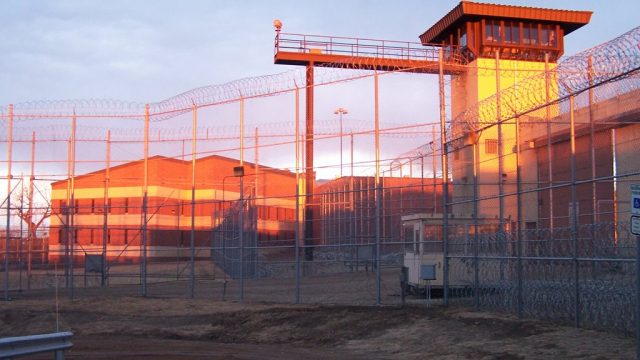North Dakota's Incarceration Rate Is Up 175%, But Crime Is Only Down 18%


Earlier today I wrote about North Dakota’s drunk driving laws and the impact they were having on the state’s prison population. My point is that sometimes the “get tough” approach to crime doesn’t work very well, doing far less to address the crime than assumed while doing far more to inflate the costs of law enforcement and imprisonment.
A study by the Pew Charitable Trusts into the impact of incarcertion on crime rates shows that this trend exists far beyond DUI policy.
In 1994 a Democrat-controlled Congress passed the Violent Crime Control and Law Enforcement Act, which was then signed into law by President Bill Clinton. The law, among other things, mandated stiffer penalties for some crimes. As we approach the 20th anniversary of that policy, what Pew has found is very little correlation between putting people in jail and lower crime rates.
That seems to be very true in North Dakota. Our state saw one of the largest increases in imprisonment rate in the nation betwen 1994 and 2012 – up 175 percent, second only to West Virginia’s 195 percent increase – but one of the smallest decreases in crime. The crime rate in North Dakota dropped only 18 percent compared to a national average of 40 percent (West Viriginia was the only state in the nation with an increase in crime, at 6 percent).
While it’s true that crime has gone down as imprison has gone up, there doesn’t seem to be any rhyme or reason to it. For instance, the State of New York decreased their incarceration rate by 24 percent and saw a 54 percent decrease in the crime rate. Florida also saw a 54 percent decrease in crime, but saw a 31 percent increase in the incarceration rate.
What gives?
Maybe the “get tough” approach to crime has a point of diminishing returns. Certainly North Dakota’s Director of the Department of Corrections seems to think so, according to the Bismarck Tribune (emhasis mine):
Bertsch had plenty of her own data to provide, including a chart showing that while North Dakota’s overall population has grown by slightly more than 13 percent between 1992 and 2013, the state prison population has grown by 202 percent in that same period.
Every time the state opened a new correctional facility, the state saw a corresponding increase in the number of inmates.
“I don’t think you can outbuild this prison problem,” Bertsch said. “If you build it, they will come.”
She said her department would struggle to keep a handle on the prison population if it continues to grow at this rate.
“It’s already a challenge trying to keep the positions we have filled,” she said.
Bertsch offered several reasons for the spike in North Dakota’s prison population.
Get-tough-on-crime legislation creating minimum mandatory sentences, for example, or “truth-in-sentencing” laws that require an offender to serve a mandatory portion of his or her sentence before being considered for parole.
In North Dakota, violent offenders must serve 85 percent of their sentence before being considered for parole.
Truth-in-sentencing laws were another product of the 1994 Violent Crime Control and Law Enforcement Act.
Those rules “have done nothing to decrease crime but they’ve certainly increased (prison) populations,” Bertsch said.

Bertsch also says that criminalizing relatively trivial crimes is inflating prison populations. For instance, in North Dakota having drug paraphernalia (i.e. a meth pipe) is a felony and can get you five years in prison. Does anyone think that sort of a law is reducing drug use in North Dakota?
Part of America’s decline in crime has to do with our aging population (just as part of North Dakota’s crime spike has to do with the state population getting younger), and I think more liberal attitudes about the “war on drugs” have had an impact as well. And to be fair, imprisonment has also played a role. The Pew researchers admit that higher incarceration rates have had short-term benefits in lowering crime. But imprisonment, to me, has always seemed a bit like treating the symptoms of crime rather than the disease.
Putting someone in jail doesn’t really address why they’re committing crimes in the first place. And at times, we seem to be criminalizing things that shouldn’t be crimes in the first place. Or, at least, not the sort of crime that puts you in jail.
People in jail merely for using drugs, for instance, probably shouldn’t be in jail. They should be in treatment.
This is a very complex issue, and we should be happy that generally speaking crime is down. But as a society I think we tend to be a bit too enamored with the “get tough” approach to crime. I don’t think it pays the dividends in crime reduction that some think it does.




